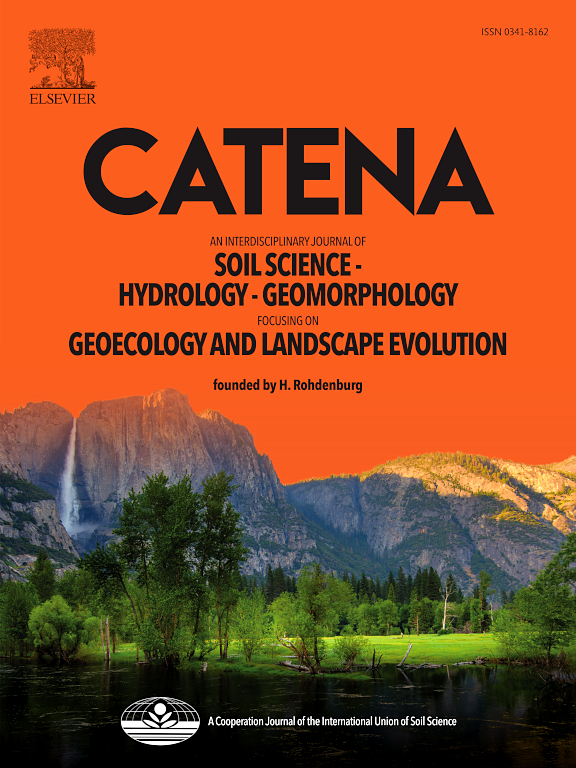Sediment particle size distribution, source of organic matter and environmental implications in the Liao River, northeast China
IF 5.4
1区 农林科学
Q1 GEOSCIENCES, MULTIDISCIPLINARY
引用次数: 0
Abstract
The Liao River Basin, one of China’s most severely affected coastal regions by soil erosion, necessitates a thorough quantitative evaluation of the sources of organic matter (OM) across sediment particle sizes to enhance understanding of carbon biogeochemical cycling. This study examined total organic carbon (TOC), total nitrogen (TN), the TOC/TN ratio (C/N ratio), and δ13C and δ15N isotope signatures in four distinct sediment particle size fractions from Liao River sediments, sampled during the summer and winter of 2023. The results demonstrated that the highest concentrations of TOC, TN, and C/N ratio were found in the <2 µm particle fraction (p <0.05), with summer values of 2.50 ± 0.43 %, 0.19 ± 0.06 %, and 13.89 ± 2.40, respectively, and winter values of 2.71 ± 0.42 %, 0.19 ± 0.05 %, and 14.66 ± 2.55. OM sources were characterized using δ13C and C/N ratio analysis, and the MixSIAR Bayesian model was employed to quantify their contributions. Aquatic plants were identified as the dominant OM source in the <2 µm fraction, whereas soil and sewage predominated in the >2 µm fractions. These results indicate that exogenous OM in the Liao River’s mainstem is primarily influenced by sewage discharge and soil erosion. This process facilitates the continuous release of nutrients from sediment particles into the water column, contributing to secondary pollution. Therefore, enhanced management of sewage discharge and erosion control is essential. Carbon and nitrogen isotope fingerprinting within sediment particle size fractions provides novel insights into biogeochemical processes within soil microenvironments.

求助全文
约1分钟内获得全文
求助全文
来源期刊

Catena
环境科学-地球科学综合
CiteScore
10.50
自引率
9.70%
发文量
816
审稿时长
54 days
期刊介绍:
Catena publishes papers describing original field and laboratory investigations and reviews on geoecology and landscape evolution with emphasis on interdisciplinary aspects of soil science, hydrology and geomorphology. It aims to disseminate new knowledge and foster better understanding of the physical environment, of evolutionary sequences that have resulted in past and current landscapes, and of the natural processes that are likely to determine the fate of our terrestrial environment.
Papers within any one of the above topics are welcome provided they are of sufficiently wide interest and relevance.
 求助内容:
求助内容: 应助结果提醒方式:
应助结果提醒方式:


